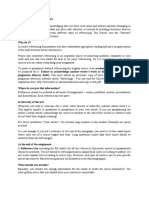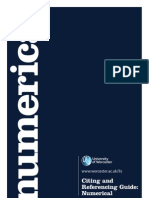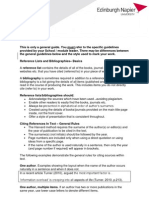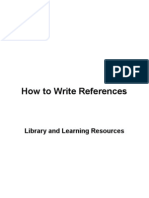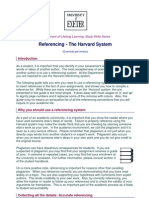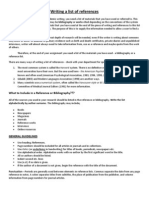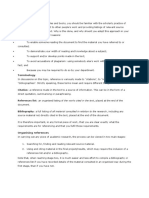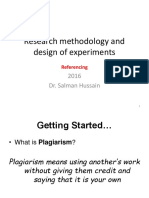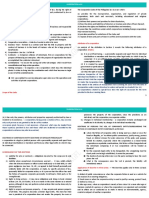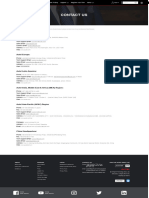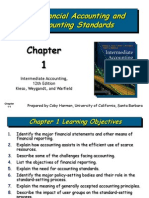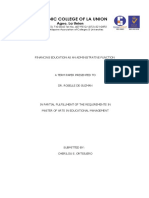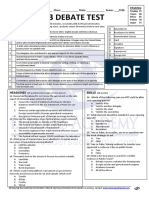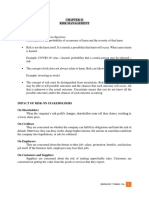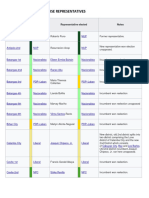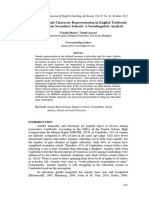From http://education.exeter.ac.uk/dll/studyskills/harvard_referencing.
htm
Creating a reference list
All of the sources you refer to in the main body of your assignment need to be listed at the
end of the assignment in a reference list. In a reference list, you only need to list those
sources from which you have either quoted or paraphrased. For example, you do not
have to list books you used for background reading purposes.
When creating a reference list, the sources should be listed alphabetically by author’s
surname, should be left justified, and the references should never be preceded by a bullet-
point or number. Where the author is anonymous or unknown for any one source, insert
that source in the alphabetical list using the title of the source instead of the author’s
name. . The reference list should be on a separate page from the rest of the assignment
and should be simply titled ‘References’ or ‘Literature Cited’ and the title should be in the
same font and size as the other headings in your assignment.
When you use the Harvard System, you are only usually required to produce a reference
list. However, some lecturers and tutors may want you to produce a bibliography instead
of a reference list. In cases where you are asked to produce a bibliography, you must list
all sources you have consulted, regardless of whether you cited from them or not. Also,
some lecturers or tutors may ask you to produce an annotated bibliography or reference
list. This simply means that after each source listed, you write a couple of sentences that
appraise the book’s usefulness in relation to the topic.
The following is a guide to how to list references in a reference list or bibliography. If you
have an example that is not covered by the list below, please check with your tutor or the
Student Support Officer regarding the correct technique.
Book with one author
Adair, J. (1988) Effective time management: How to save time and spend it wisely,
London: Pan Books.
Book with two authors
McCarthy, P. and Hatcher, C. (1996) Speaking persuasively: Making the most of your
presentations, Sydney: Allen and Unwin.
Book with three or more authors
Fisher, R., Ury, W. and Patton, B. (1991) Getting to yes: Negotiating an agreement without
giving in, 2nd edition, London: Century Business.
Book – second or later edition
Barnes, R. (1995) Successful study for degrees, 2nd edition, London: Routledge.
Book by same author in the same year
Napier, A. (1993a) Fatal storm, Sydney: Allen and Unwin.
Napier, A. (1993b) Survival at sea, Sydney: Allen and Unwin.
Book with an editor
Danaher, P. (ed.) (1998) Beyond the ferris wheel, Rockhampton: CQU Press.
�From http://education.exeter.ac.uk/dll/studyskills/harvard_referencing.htm
If you have used a chapter in a book written by someone other than the editor
Byrne, J. (1995) ‘Disabilities in tertiary education’, in Rowan, L. and McNamee, J. (ed.)
Voices of a Margin, Rockhampton: CQU Press.
Books with an anonymous or unknown author
The University Encyclopedia (1985) London: Roydon.
Unpublished, verbal sources such as interviews and lectures are not reproduced in the
reference list. However, you must put any published course materials that you have used
in the reference list using the conventions below.
Written course material, for example distance learning unit material
Dhann, S. (2001) CAE0001LWR Unit 5: Note taking skills from lectures and readings,
Exeter: Department of Lifelong Learning.
OR, IF THE AUTHOR IS UNKNOWN
Department of Lifelong Learning (2001), CAE0001LWR Unit 5: Note taking skills from
lectures and readings, Exeter: Author.
(NB – ‘Author’ at the end means that the publisher is the same as the author)
Government publications
Department for Education and Employment (DfEE), (2001) Skills for life: The national
strategy for improving adult literacy and numeracy skills, Nottingham: DfEE Publications.
Conference papers
Hart, G., Albrecht, M., Bull, R. and Marshall, L. (1992) ‘Peer consultation: A professional
development opportunity for nurses employed in rural settings’, Infront Outback –
Conference Proceedings, Australian Rural Health Conference, Toowoomba, pp. 143 – 148.
Newspaper articles
Cumming, F. (1999) ‘Tax-free savings push’, Sunday Mail, 4 April, p. 1.
OR, IF THE AUTHOR IS UNKNOWN
‘Tax-free savings push’, Sunday Mail (4 April 1999), p. 3.
The conventions for listing journal articles are similar to books, but note the extra
information required in the example below and apply this to all journal article listings.
Journal article
Muller, V. (1994) ‘Trapped in the body: Transsexualism, the law, sexual identity’, The
Australian Feminist Law Journal, vol. 3, August, pp. 103-107.
In this example, Muller has written the journal article ‘Trapped in the body:
Transsexualism, the law, sexual identity’ and it has appeared in the journal ‘Australian
Feminist Law Journal, in it’s 3rd volume that was published in August of 1994. The article
appears on pages 103 to 107 of the journal. Please note that sometimes, instead of
‘volume’ there may be an ‘issue’ number, and instead of a month of publication, there may
�From http://education.exeter.ac.uk/dll/studyskills/harvard_referencing.htm
be a season. Sometimes there will be a volume number and an issue number. In those
cases, list both the volume and issue numbers as has been done below.
Journal article with both volume and issue number
Muller, V. (1994) ‘Trapped in the body: Transsexualism, the law, sexual identity’, The
Australian Feminist Law Journal, vol. 3, no. 2, August, pp. 103-107.
Electronic and web based references can be listed in the following ways.
Journal article from CD-ROM, electronic database, or journal
Skargren, E.I. & Oberg, B. (1998) ‘Predictive factors for 1-year outcome of low-back and
neck pain in patients treated in primary care: Comparison between the treatment
strategies chiropractic and physiotherapy’, Pain [Electronic], vol. 77, no. 2, pp. 201-208,
Available: Elsevier/ScienceDirect/ O304-3959(98)00101-8, [8 Feb 1999].
In this example, [Electronic] refers to the type of media that you found the source on. If
you found the source on a CD-ROM, you would put [CD-ROM] in the square brackets
instead of ‘Electronic’. As with a normal journal example, the volume number, issue
number and page numbers are listed. At the end of this example, note that the name of
the database has been listed, along with the identification/access number of the article,
and an access date (in square brackets).
Examples of other electronic references are listed in the box below. See also - http://
www.lc.unsw.edu.au/onlib/ref_elec2.html#elec15
Electronic mail (e-mail)
Johnston, R. (2001) Access courses for women, e-mail to NIACE Lifelong Learning Mailing
List (lifelong-learning@niace.org.uk), 22 Aug. [24 Aug 2001].
OR
Robinson, T. (2001) Re: Information on course structure, e-mail to S. Dhann
(s.dhann@exeter.ac.uk), 12 Jul. [13 Jul 2001].
Discussion list
Berkowitz, P. (1995) April 3, ‘Sussy’s gravestone’, Mark Twain Forum [Online], 3 Apr,
Available e-mail: TWAIN-L@yorkvm2.bitnet [3 Apr 1995].
World Wide Web page
Young, C. (2001) English Heritage position statement on the Valletta Convention, [Online],
Available: http://www.archaeol.freeuk.com/EHPostionStatement.htm [24 Aug 2001].
In the WWW page example, sometimes the author’s details or the date of publication/
update might be missing. When the author’s name is missing, use the name of the web
page to list the reference, as you would with any other anonymous source. If the date of
publication or update is missing, omit this information, but be sure to still include in square
brackets the date you accessed the information.

